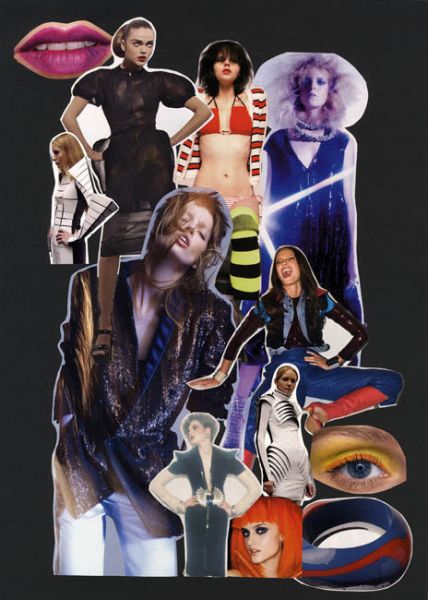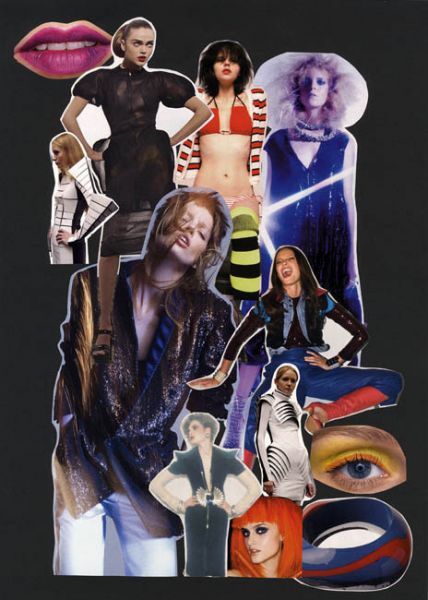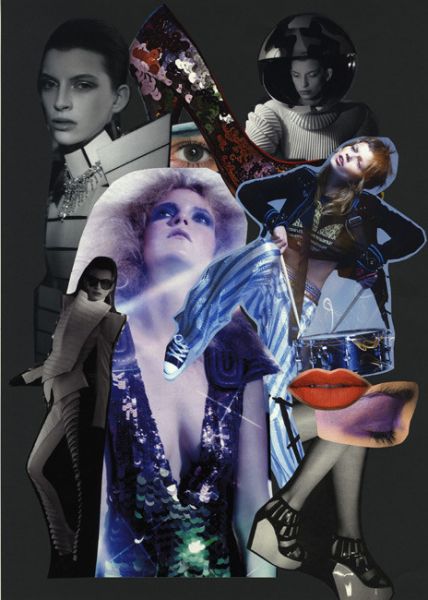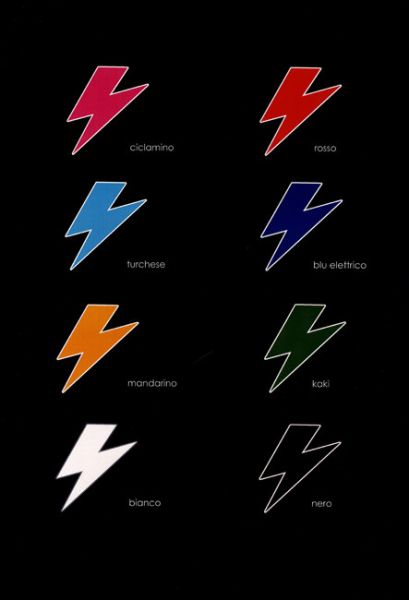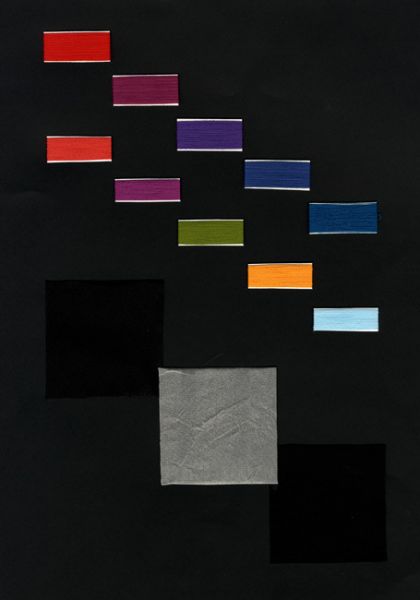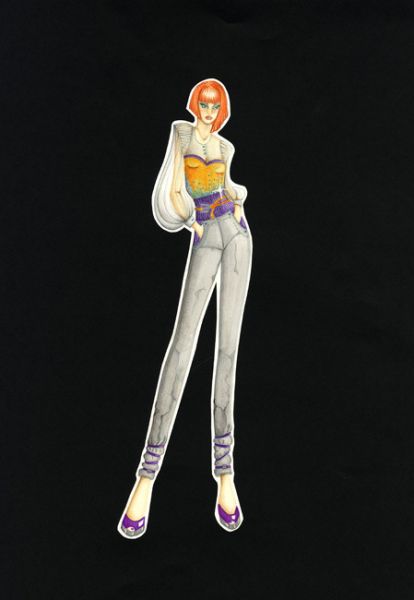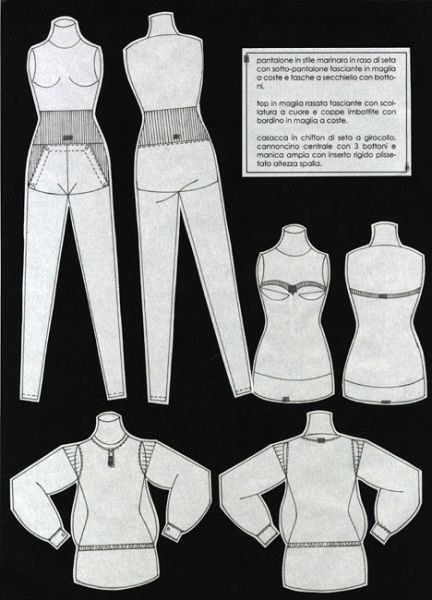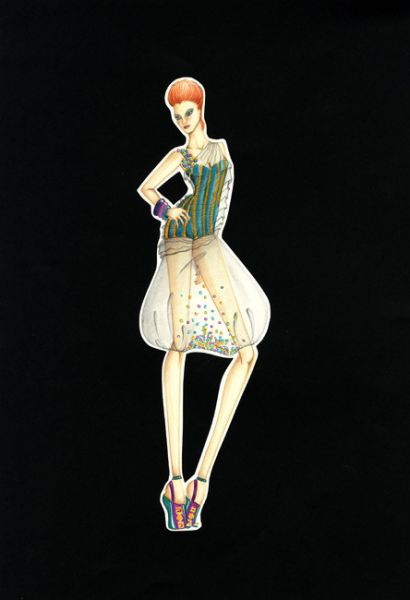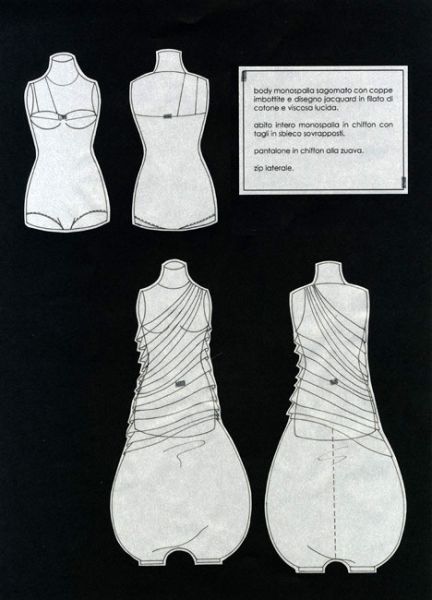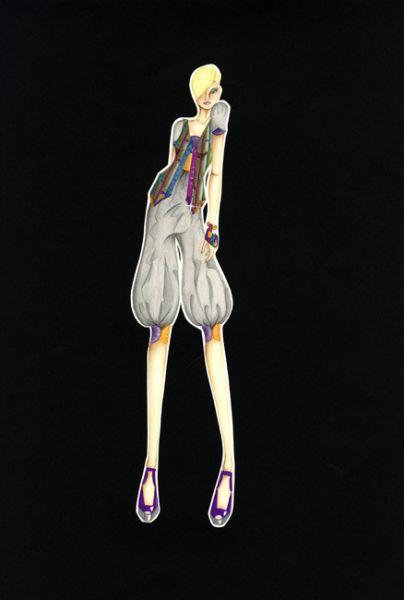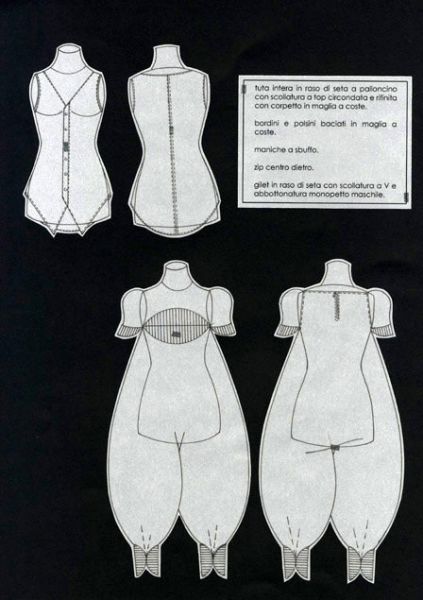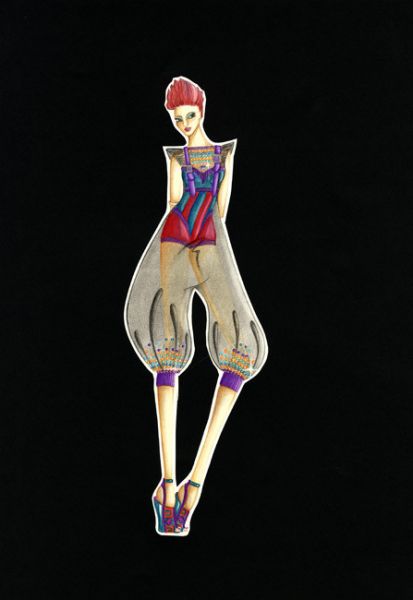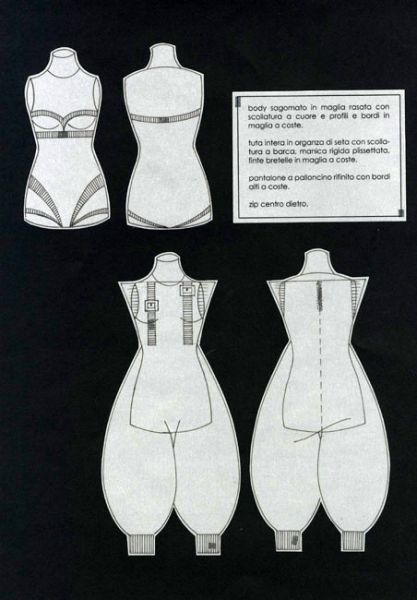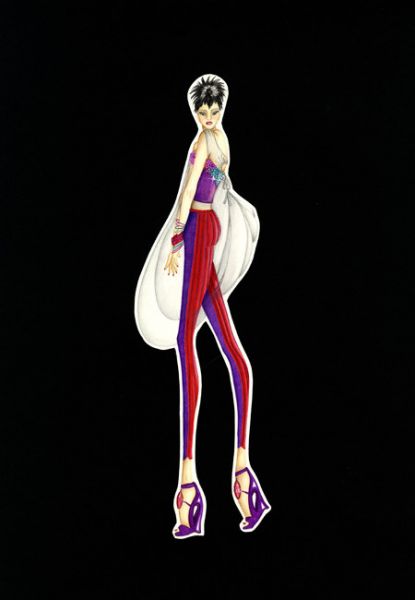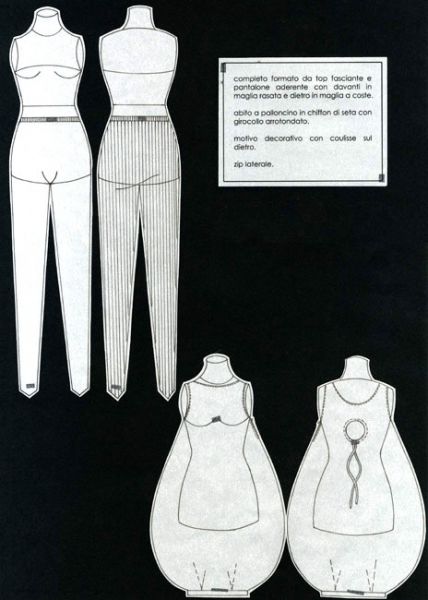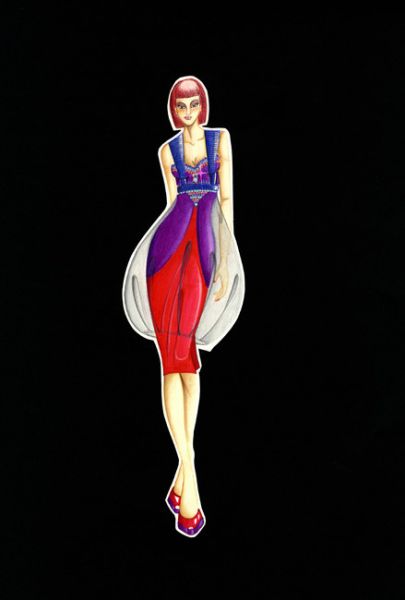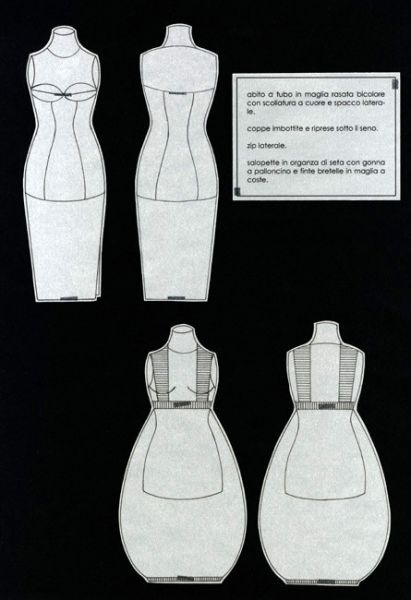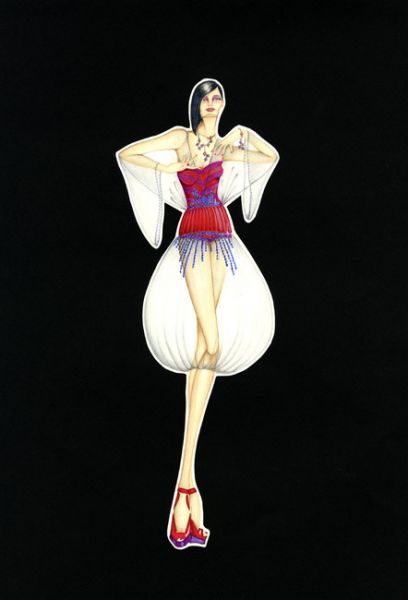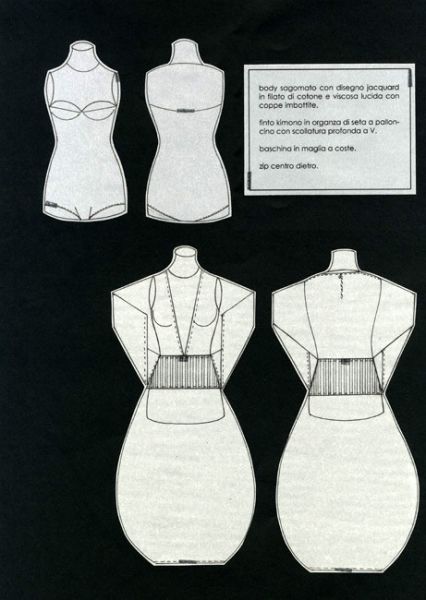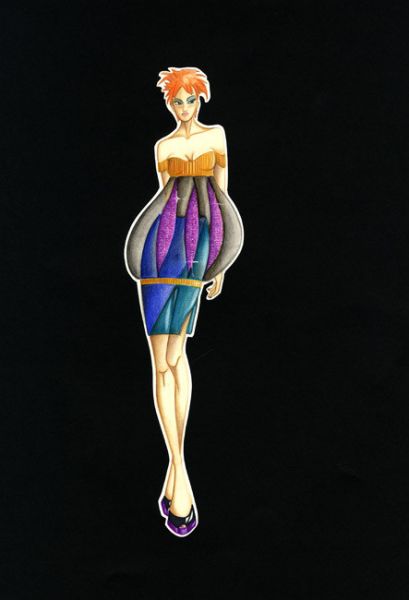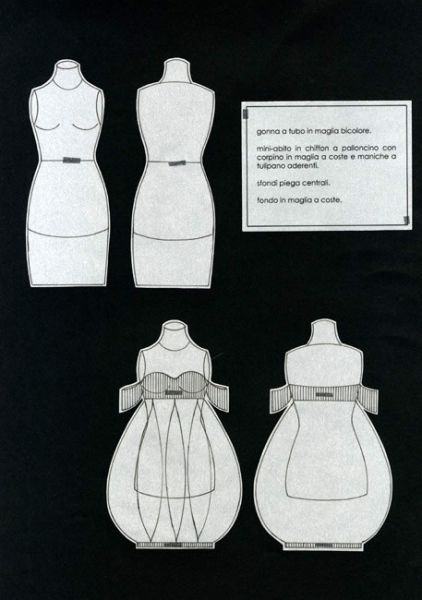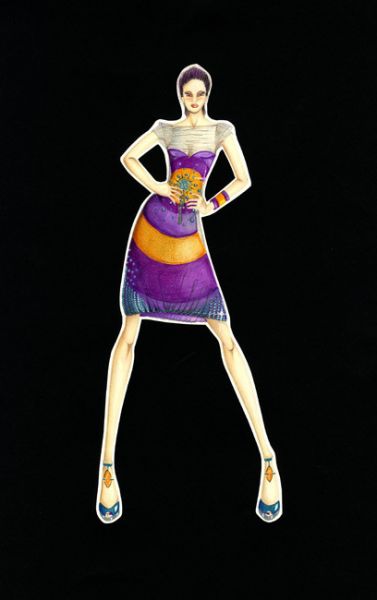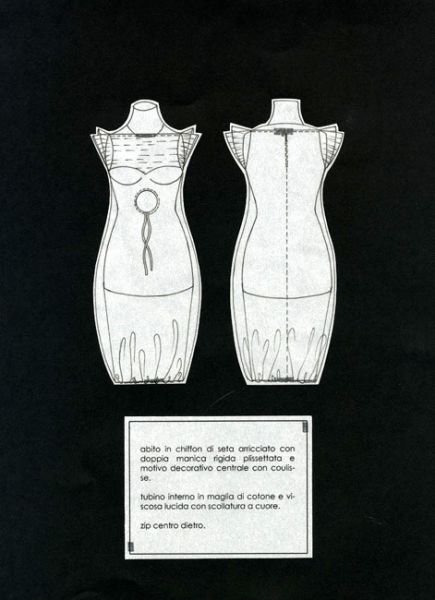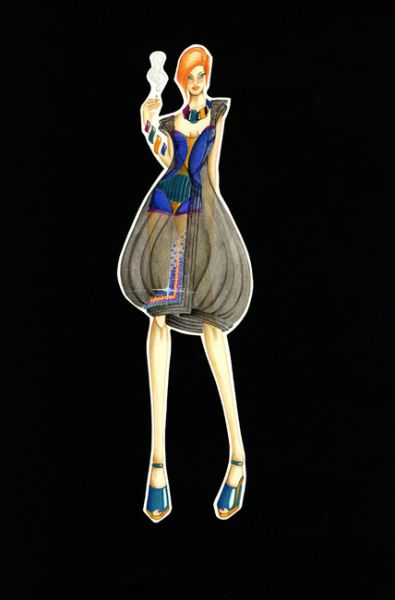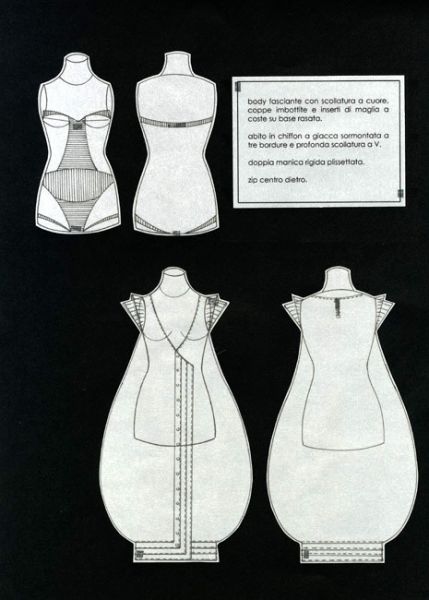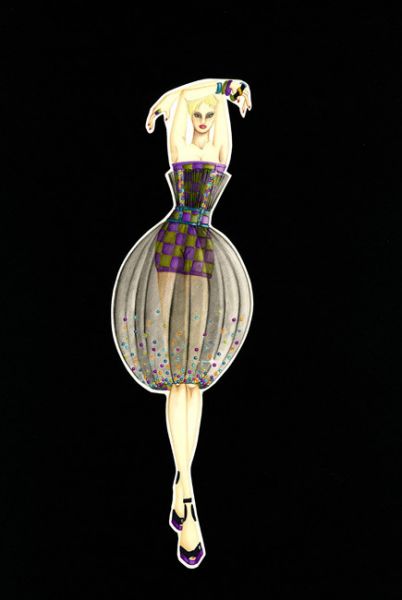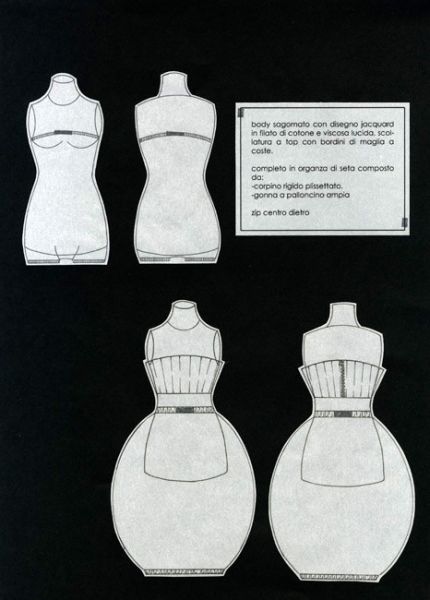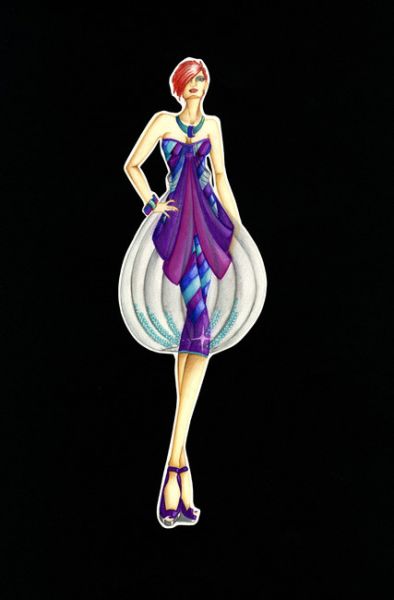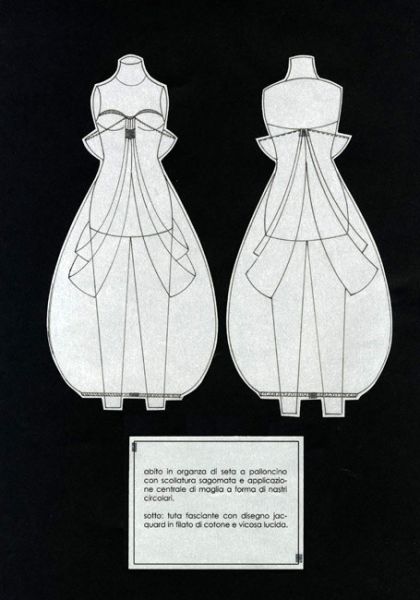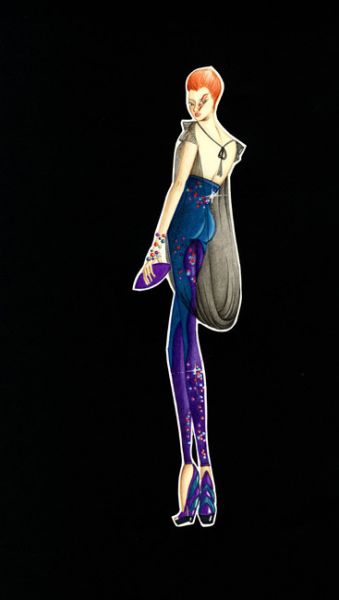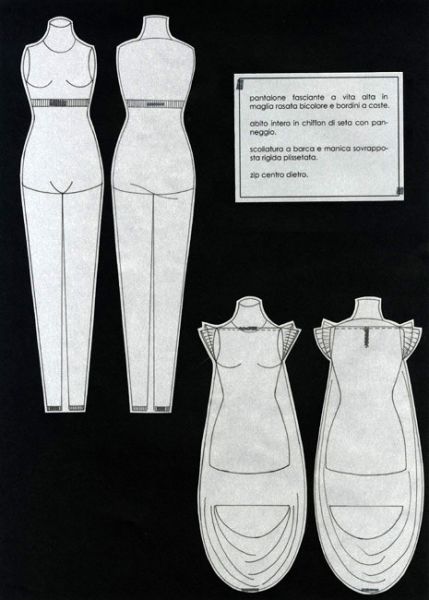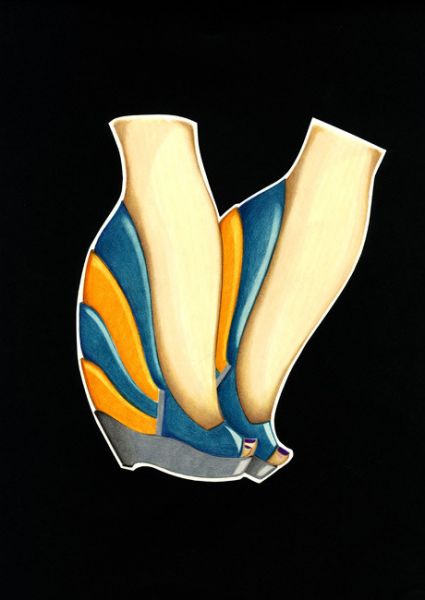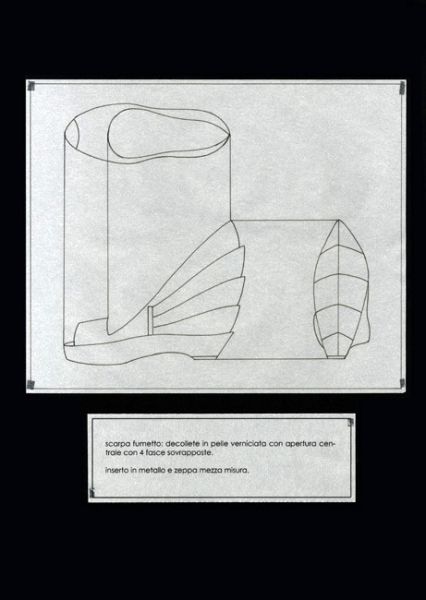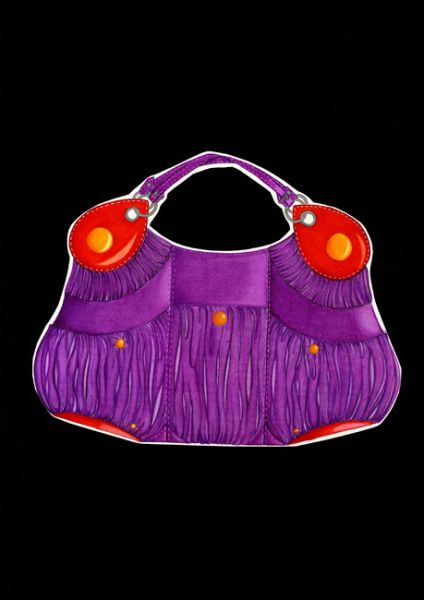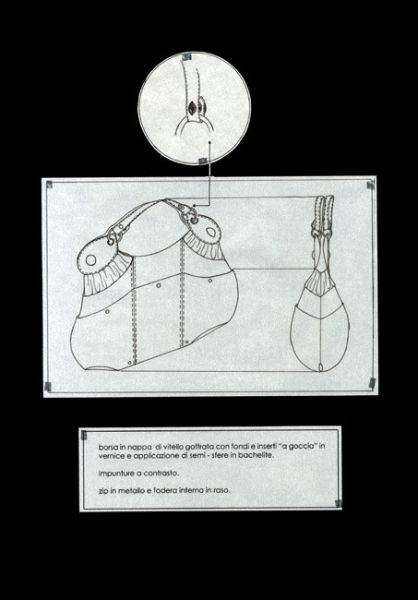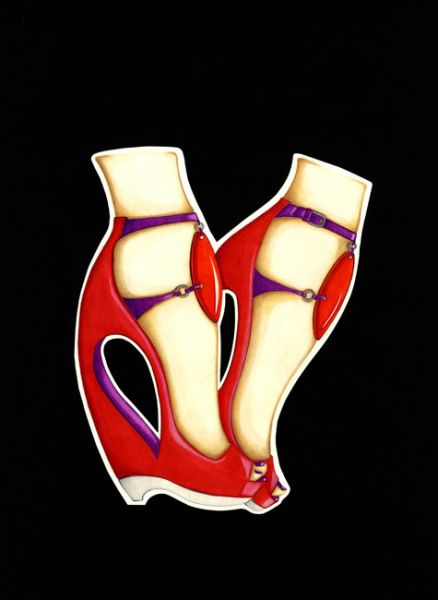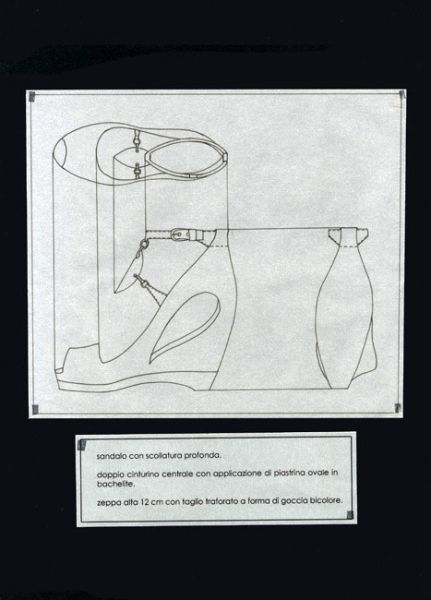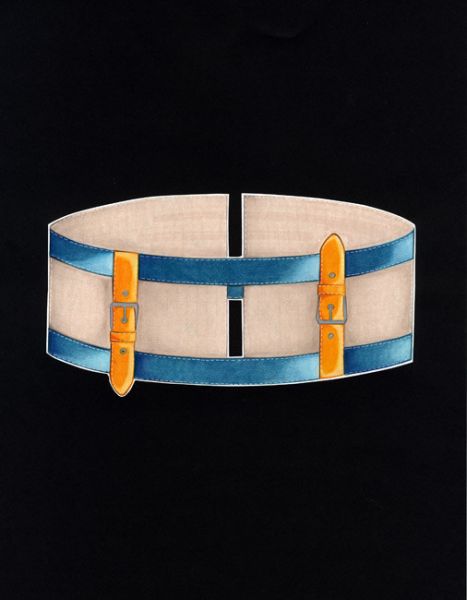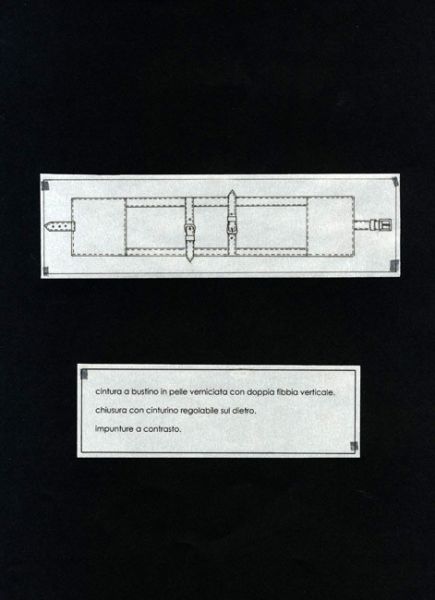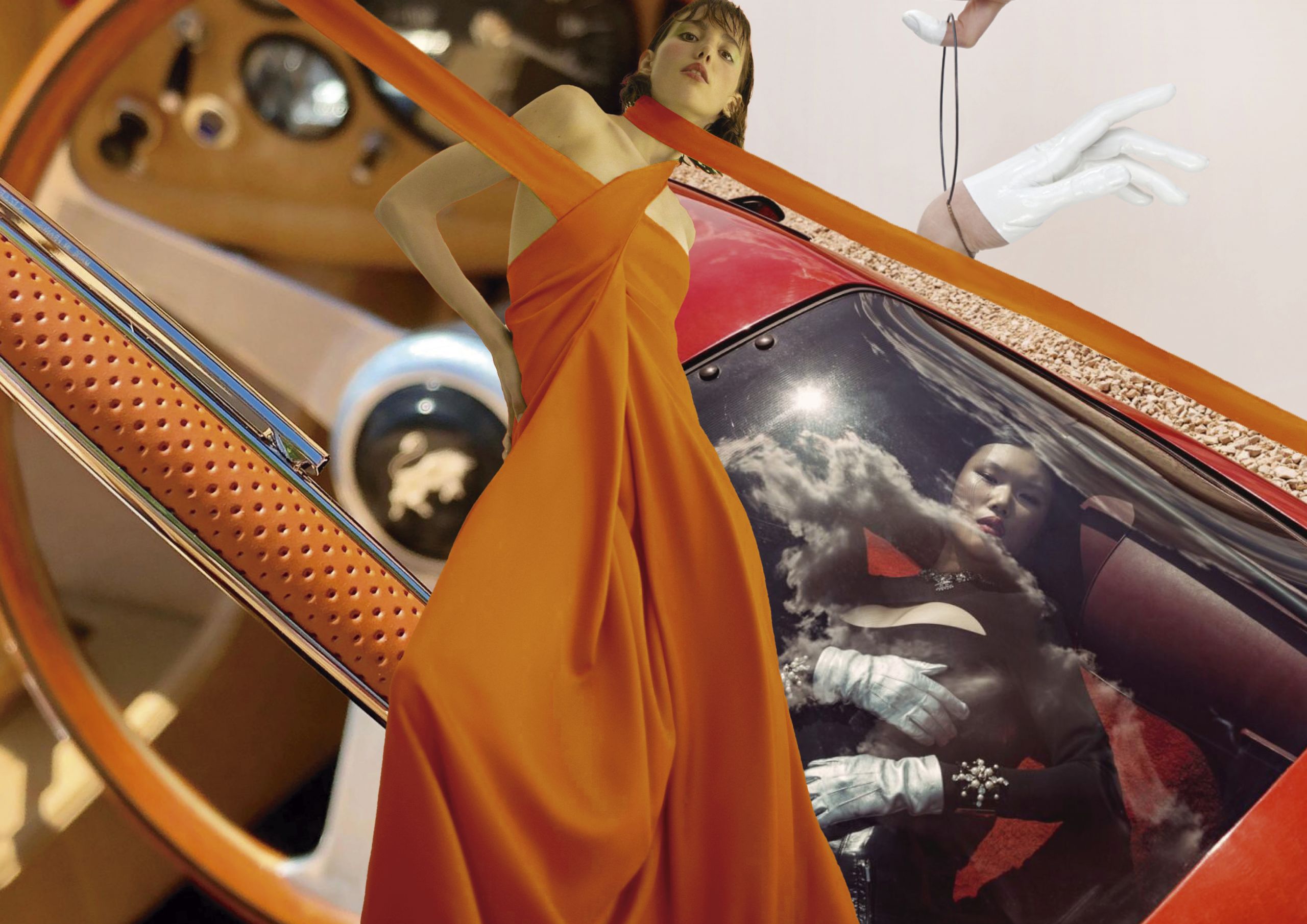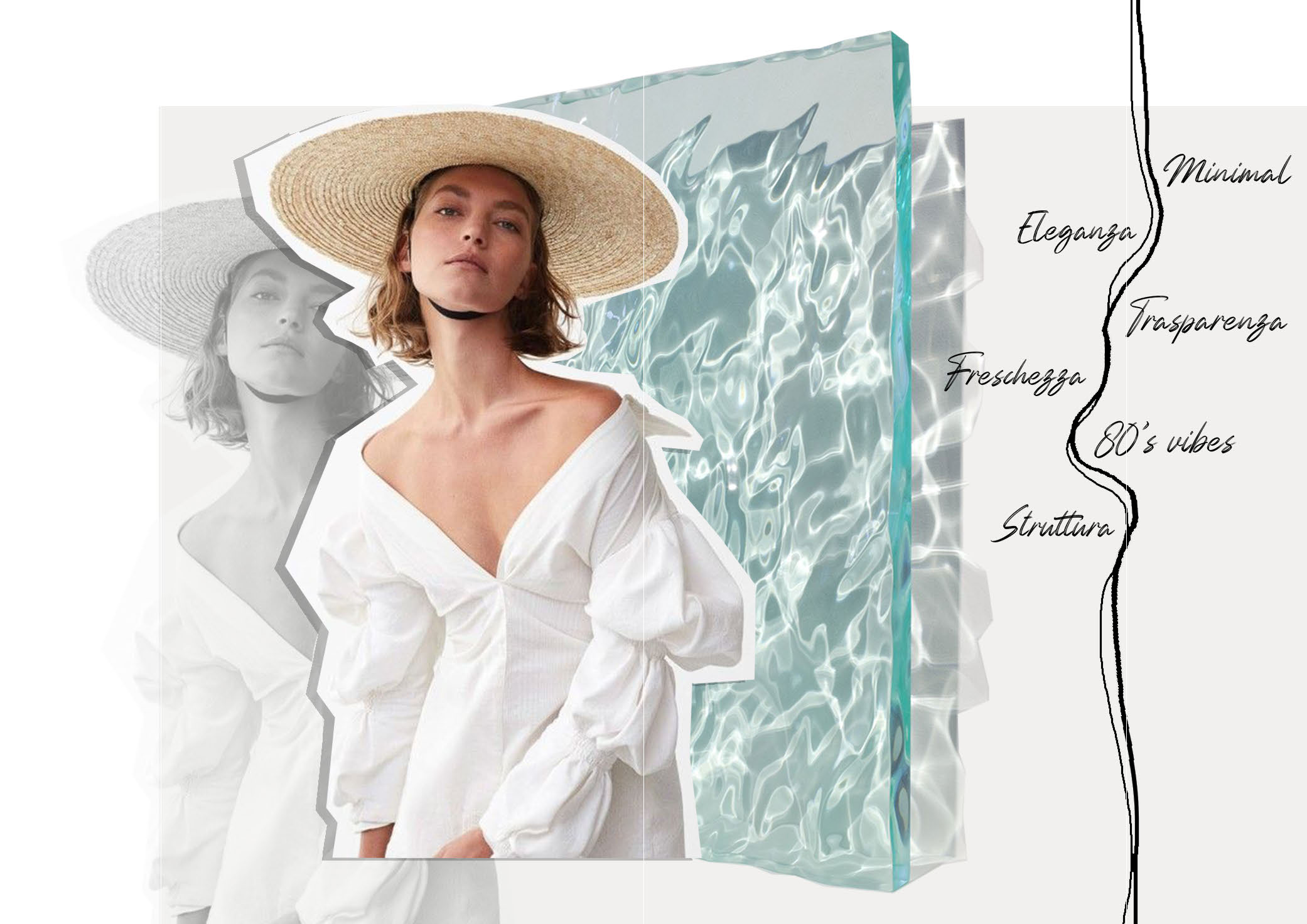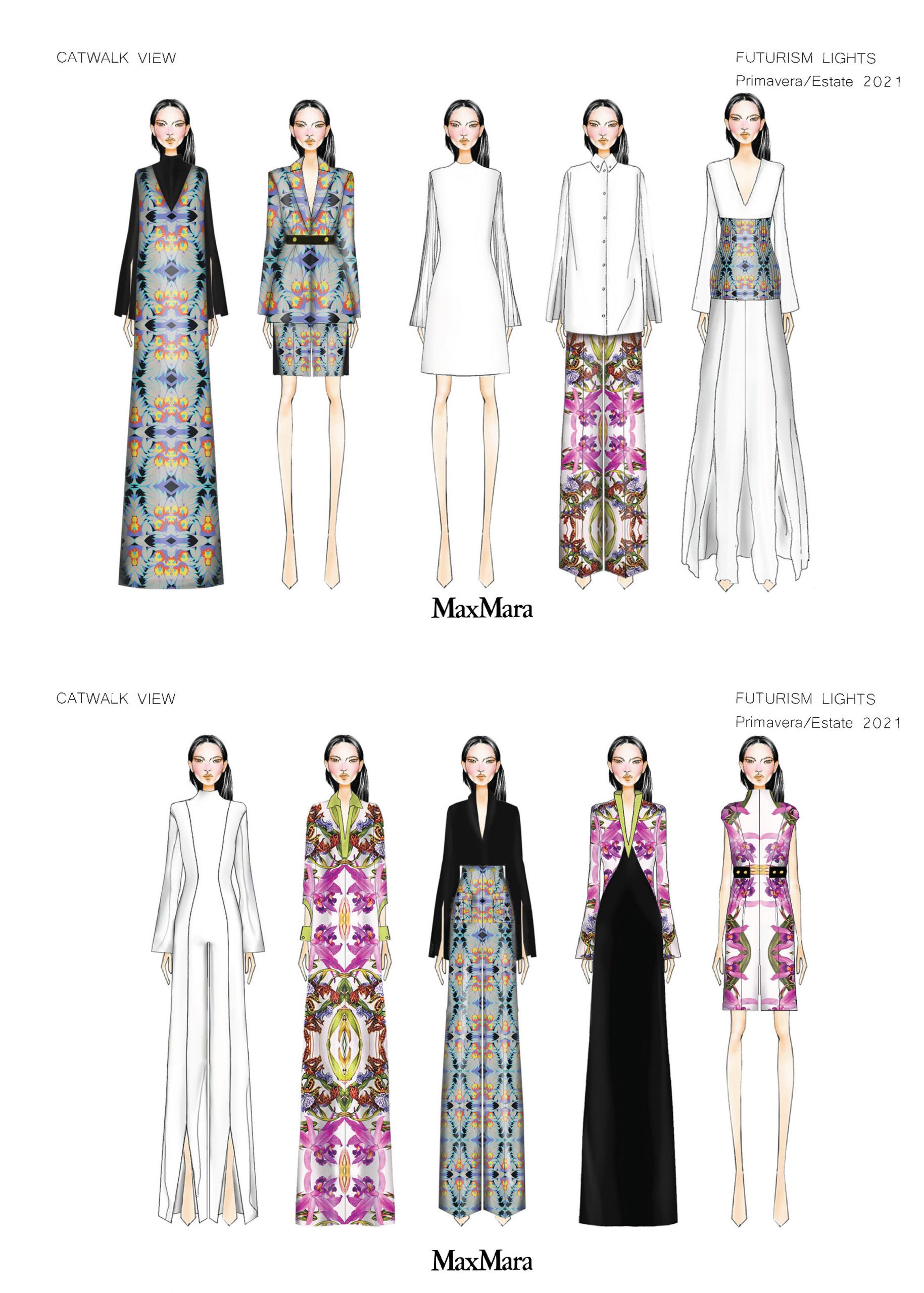 This collection was made by our student:
This collection was made by our student:
Francesca Cinderellini (ITA)
“THE RISE AND FALL OF ZIGGY STARDUST”
Rise and decline of a myth
In the early 70s, in England, rock becomes a masked ball. Under the bright neon lights, the young dudes went crazy: neo-freaks who transform the bearded eco-pacifist gatherings of their hippie cousins into a wild kitsch festival. That it is “peace and love”, in short, but without any ideological or political constraints whatsoever. This is how disengagement, transvestism and sexual ambiguity triumph, in a flood of sequins and sequins, feathers and rimmel, boots and spacesuits. It is the time of “glam-rock” and a new drunken Swingin ‘London. “Rock’n’roll with lipstick”, John Lenon will define it. In this vanity carnival, David Bowie hits the perfect mask: Ziggy Stardust. An androgynous alien with awkward movements, made up like a drag queen and wearing a carrot-colored wig. He is “the man who fell to earth”, the messiah who lasts only one season, the time that passes between his rise and fall (“the rise and the fall”). And in this parable there is the whole representation of Bowie’s art: the staging of the Warholian “quarter of an hour of celebrity”, the morbid hedonism of Dorian Gray, the parody of divism and ephemeral myths of the society of consumption and, last but not least, the omens of a gloomy Orwellian future. Romantic and voluptuous, ambiguous and cheeky “extraterrestrial”, and therefore free from the sexual taboos that chain humanity, Ziggy polveredistelle is the quintessence of the glam spirit. Past and future coexist in him: son of the decadent aura of the pre-war Central European cabaret, he is stretched out in the futuristic momentum of the Clockwork Orange of Kubrick (1971), whose initial notes will open the Ziggy Stardust tour show. It is the mask that incorporates all the stereotypes of rock filtered through the grotesque lens of glam. A caricature of the star, destined to be idolized by the public and crushed by the star system. The stage fiction, however, soon prevails reality and Bowie is embodied in his alter ego until he immolates him on stage, giving him immortality. Yes, because it is on the “ephemeral-eternal” dichotomy that the work “the rise and the fall by Ziggy Stardust” is played. The fact that in the end the latter prevailed (the album is still considered a classic) is the demonstration that in the London dandy marketing and art are a winning and inseparable combination. Musically, the album is a collection of romantic and rock’n’roll ballads that are electrifying and very close to the edge of punk. Music to play at full volume, as recommended on the back cover. The eleven tracks show off all the glamorous paraphernalia: from shameless and effeminate voices to sharp guitars, from pompous arrangements of strings to poignant melodies. Meanwhile, Bowie never takes seriously melodrama: his songs are a sneer at the bacchettona morality, an essay of ironic transgression and, often, of pure nonsense. To increase the hype, he then confessed to the British Melody Maker: “I’m gay and always have been”. True or false it doesn’t matter: the scandal is created because “fame what you need to borrow” (“fame, what you need you have to borrow”), as he will theorize in “Fame” (1975). Ziggy is the man of the stars, invoked in the space ballad “Starman”, one of Bowie’s most legendary melodies, and (perhaps) a starting point for the plot of the science fiction film “Close Encounters of the Third Kind” of five years later. The famous chorus (“there’s a starman waiting in the sky / he’d like to come and meet us / but he thinks he’d blow our mind”) is a masterpiece worthy of standing alongside the Beatles classics. Because like the four from Liverpool, Bowie has the rare gift of knowing how to build from a few syllables what the Americans call “hooks”, the hooks of fishing, capable of capturing the listener forever, but the glam epic will quickly dissolve in the stardust of his hero.
“She was a creature born to be idolized by her fans – Bowie will reveal – I used it using the simple canons of rock’n’roll. A marketing product, in short, but studied down to the smallest details as a work of art. To put it in Bowie’s words “we thought we were avant-garde explorers representing an embryonic form of post-modernism”. A total art, in which music is combined with theater, music-hall, mime, cinema, comics, visual arts, but without ever losing sight of the ultimate goal: celebrity. “I will become famous” Bowie had sworn before the release of “Ziggy Stardust”
Glam fashion
Colorful and psychedelic look, ambiguous and extravagant, halfway between the hippie utopia and the punk rebellion, to amaze, the glam chooses a flashy and excessive clothing that prefers feathers and sequins, glamorous and kitsch, together with the most eccentric combinations: it is the style launched by David Bowie – Ziggy Stardust which will explode in the 70s as a fashion phenomenon with the opening of the first discos such as Studio 54 and New York Xenon. Everything is allowed to imitate models and rock stars. Green light for heavy makeup, translucent lips and blush on the cheeks, fluffy hairstyles, silver-colored second skin suits with sequins. It is the moment of synthetic fabrics and lights such as lurex, laminates and brilliant borns, of wraparound and tight – fitting clothes, from eccentric shoes inspired by pop – art such as rafts with high soles, preferably metallized. Colors? Shocking to get noticed in the disco lights. The “jumpsuit” is very popular, a second skin stretch suit with zip on the front and fuseau or flared trousers tight on the sides. The glasses? Large and square or teardrop, with gilded metal frame and rhinestone applications “be what you are”: from Marc Bolan to Roxy music, from Madonna to Elton John, to the Rocky Horror Picture Show, glam has redesigned the scenario of dreams of a generation, affecting the costume more than you can imagine.
Exam collection: 2009
Theme: Ziggy Stardust
Line: futuristic
Season: spring / summer 2010
Tirella colors: turquoise, petrol, cyclamen, purple, red, mandarin, khaki, white, black
Target: 25 to 45 years old
Social level: medium wealthy
Point of sale: boutique, corner at mega stores with high positioning in the market
Distribution: Europe and North America
Life cycle: long
Number of models: 18
Table of fabrics: silk organza, silk satin, silk chiffon
Yarn table: 100% cotton, 100% shiny viscose
Technical sheets: flat scale drawing with detailed description of the basic model with transformation
Material used: metal zip, micro and macro mother-of-pearl sequins, elastic, metal studs, whalebones, shoulder straps, bakelite buttons, bakelite semi-spheres, metal rings. Accessories table: n ° 4 shoes, n ° 2 bags , n ° 2 belts.

